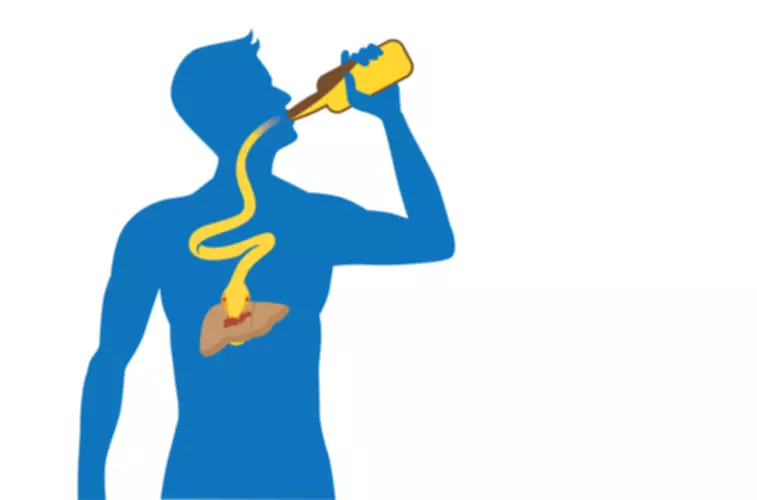
These facilities still exist today and are used primarily for those who have been incarcerated or are unhoused. Halfway houses are often designed specifically for those that received treatment for addiction to drugs or alcohol while in prison. Halfway houses can be government funded or run by private organizations that receive government grants. Residents may sleep in dorms, and attendance can be court-ordered for a set period. Samir is a writer specializing in mental health, substance use disorders, and addiction treatment with a background in the non-profit sector.
- This was a home, typically placed in low-income housing, that enforced policies around sobriety and required attendance to AA meetings.
- Yet, many addiction treatment programs are time-limited, often overlooking small elements that are crucial for patients.
- Sober living houses also date back to the 1800s when religious organizations set up residencies where people were required to abstain from alcohol.
- Some sober houses provide forms of peer-led counseling or promotion of 12-step programs as favored by organizations such as Alcoholics Anonymous.
- Dr. Sinclair first studied the effect of naltrexone use on alcohol consumption in rats, and later, in humans.
How Much Is a Sober Living House?
- Residents of halfway houses are typically under the supervision of probation or parole officers and must obtain approval before leaving or returning to the facility.
- The costs of halfway houses vary depending on the number of services and amount of privacy offered.
- For people in recovery, finding the right type of support is a critical part of remaining sober.
- Since sober living typically follows addiction treatment, getting a referral from the treatment provider is recommended.
- Unfortunately, by 2022, over 30,000 people with chronic substance abuse problems were living in emergency shelters, and more than 54,000 were unsheltered across the U.S.
- Family members can play an important role in a relative’s recovery journey.
Both sober living homes and halfway houses support people recovering from substance use disorders. Both of them also offer access to resources that can help you with early recovery. In addition to reducing the risk of relapse, recovery residences have other benefits. One study of 330 residents at 49 sober living homes in California found that residents had increased odds of total abstinence and employment.
- Sober living housing could be what you need to help you back on your feet.
- The cost varies by the type of sober-living environment and length of stay.
- Though you no longer live under the influence of substances, this doesn’t mean that other unhealthy aspects of your life have changed.
Take the Next Step…
If you wish to contact a specific rehab facility then find a specific rehab facility using our treatment locator page or visit SAMHSA.gov. Residents provide their own food and toiletries, although staff in the house can support residents in applying for government funding where needed, for example, applying to the supplemental nutrition assistance program. A halfway house may host a specific population, such as survivors of intimate partner violence or people who have previously been homeless. While most people can quit substance use for a short period, long-term sobriety is usually accomplished by traveling the road of recovery.
What Are the Differences between Halfway Houses and Other Sober-Living Houses?
I believe that it would not be too difficult to screen these facilities to see which ones are open to the possibility of working with a team to provide an alternative to residential rehab, and which ones are not. Many sober living owners or managers may be against the idea, choosing to stick to the traditional model, but some are forward thinking, and see the possibilities of providing better, and more personalized care. Likewise, in the past, sober living homes were not known to be Suboxone friendly. Unfortunately, clients were turned away from sober living homes if they were currently taking Suboxone as prescribed by their addiction treatment doctor. Additionally, seeing these experts in rehab may not provide any additional benefit to the rehab client. Unless the doctors who say clients and Rehab are prepared to provide proven medical therapies, it’s questionable whether their services will contribute to long-term recovery from addiction.
The Need for Supportive Housing

If you’ve recently relapsed, then sober living residences could be a good option. If you’re struggling with triggers and feeling overwhelmed, then a drug and alcohol-free environment can be helpful. A sober living home (SLH) is a sober house vs rehab residential establishment that provides structure and a sense of community to those healing from substance use disorders. Yes, many sober living homes encourage residents to find employment & reintegrate into society while maintaining a sober lifestyle.

The outcomes of living in such an environment can include positive health, behavioral, and relationship changes. Addiction treatment begins in the mind, but there are treatment facilities that specialize in helping people tackle addiction in a way that best suits their needs and circumstances. There is such a thing as an ideal way to tackle an addiction, but that ideal is individual, and there are realities that stand in the way of offering everyone the best treatment possible. These are fixed for a certain number of weeks, working through a set program with a group of individuals. These programs represent timelines rather than strict guidelines, and individuals are still treated in a unique fashion corresponding to their needs and circumstances. Sober Surroundings is a sober home only and we do not provide addiction services or addiction treatment of any kind.

Healthy Living In Recovery

As individuals pay rent and expenses, there is generally no time limit on how long they can stay. The facilities are usually pleasant and can include private rooms and bathrooms. All sober living homes have a zero-tolerance policy regarding the use of drugs or alcohol. Usually, residents have recently completed inpatient or intensive outpatient treatment for substance use addiction.
A Sober Living Home Vs. Residential Rehab: Which Is Best For Your Sobriety?
Visiting potential homes and talking to current residents can also give you a better sense of the environment and whether it aligns with your recovery goals. Laws like the Affordable Care Act (ACA) and the Mental Health Parity and Addiction Equity Act (MHPAEA) mandate that health plans cover drug rehab costs, including various levels of care for substance use disorders. While some sober homes offer reduced rent, most require residents to pay monthly rent, typically from $1,500 to $2,000, with an average cost of around $1,750 per month. Each sober living house has its own rules that residents must adhere to to remain at the facility.
